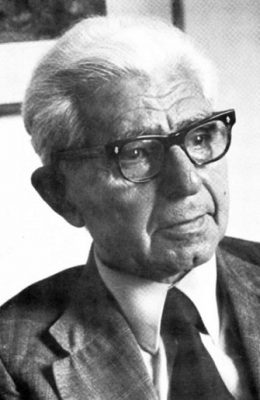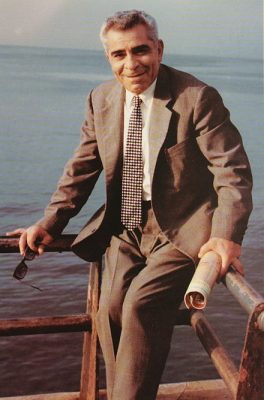The administrative seat of the kaza Gürün, the town of same name, is situated in the fertile, tree-lined and steep valley of the Tohma (Melas) River, a right tributary of the Euphrates.
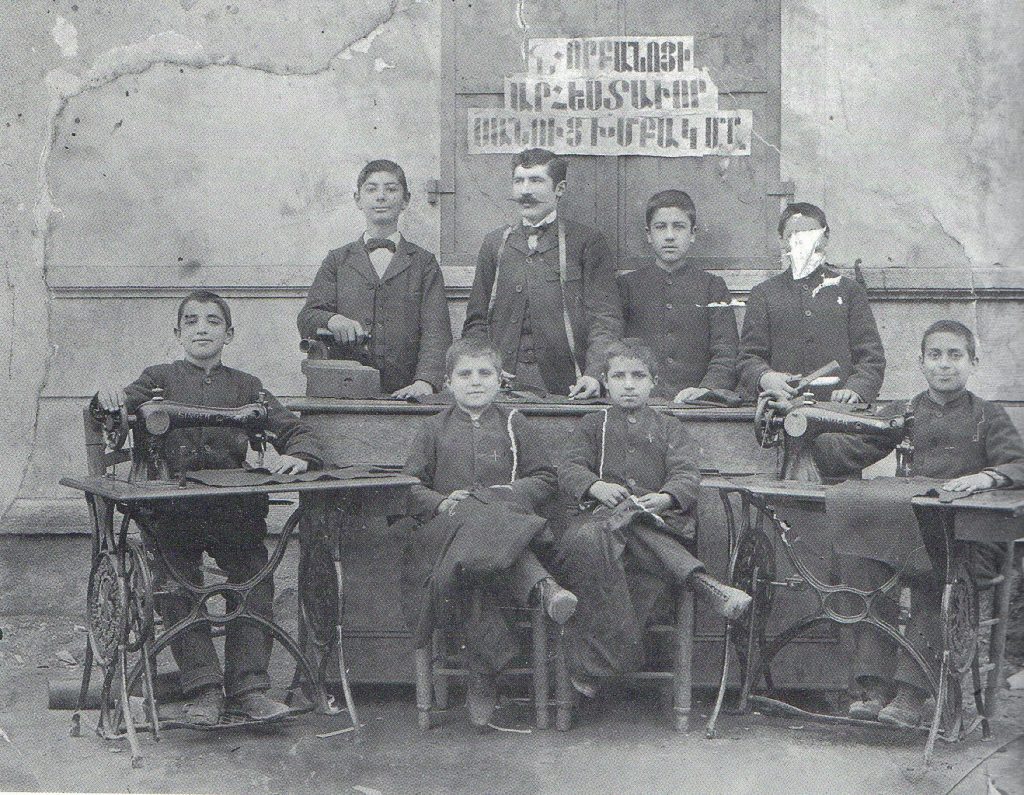
Population
“With its five exclusively Armenian villages and a handful of dispersed communities, the kaza of Gürün had a total Armenian population of 13,874 in 1914. The seat of the kaza (…) had 12,168 inhabitants, 8,406 of whom were Armenians. The town was strung out along the two banks of the Melos/Tohmak [sic], made up of a succession of neighborhoods scattered through little valleys. The Armenians had 12 schools in Gürün. The town preserved its prestigious past, seen in the ruins of a medieval citadel that had been restored early in the eleventh century and the ‘desert’ (monastery) of the Holy Mother of God in Sahglu. It was known not only for its commerce and craftmanship, but also for the manufacturing of rugs, cotton fabric, and wool products. There were three Armenian villages in the immediate vicinity of Gürün – Kavak (pop. 220), Karasar (pop. 410), and Kristianyören (pop. 80)—and two more villages to the north on the road to Mancılık; Karayören (pop. 560) and Çahırınköy (pop. 140).”[1]
The Armenians of the kaza of Gürün engaged in handicrafts, trade, and partly in agriculture. They maintained ten churches and twelve schools for 1,120 children.[2] “A genius entrepreneur introduced the loom and the whole town began to produce English cloth in connection with the industrial center of Manchester. (Gürün) was hit hard during the massacre of 1896 and later on, apprenticeship schools for orphans were established there.”[3]
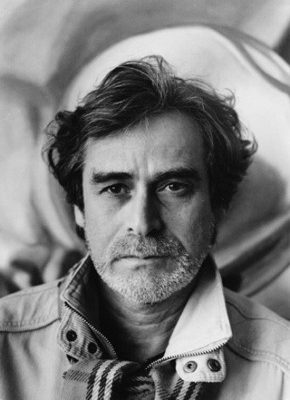
Notable Armenians
Vahe Vahian (also: Vahyan; born Vahe Abdulian, 1908, Gürün [Kyurin] – 1998, Beirut): poet, writer, publicist, public figure
Haroutiun Galents (also Galentz, Kalents, Armenian: Հարություն Կալենց; 1910 in Gürün [Kyurin] – 1967 in Yerevan): painter
Andranik Tsarukian (Անդրանիկ Ծառուկեան Antranig Dzarougian, born 1913 in Gürün [Gurun, Kyurin] – 1989 in Beirut): poet, educator, journalist
Harutyun Kalents / Haroutioun Galents: A Man Deprived of his Childhood
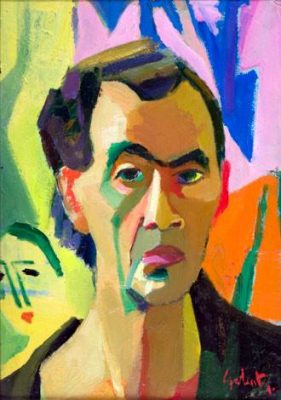
His father Tiratur owned a wool-dying factory which left a profound impression on young Kalents with its vats of bright colors. In 1915, during the Ottoman genocide, Kalents’ father was taken away by Ottoman soldiers, never to be seen again. Kalents along with his three brothers and mother escaped to Aleppo, Syria. A few days after their arduous trek into Aleppo, Kalents’ mother died of starvation and fatigue. Kalents and his three brothers spent their childhood and youth in an Aleppo orphanage. Despite the hardships of life in the orphanage, Kalents began cultivating his passion for arts in part by encouragement from one of the orphanage sisters. He often escaped the orphanage to roam around the Aleppo markets and paint.
In 1922, at the age of 12, Kalents left the orphanage to become an apprentice to a lithographer and later received his primary artistic education from Onik Avetisyan in Aleppo. He then followed his brothers to Tripoli, Lebanon where they had opened a photo studio. Kalents painted backgrounds to be used in the photo sessions. From 1929-1933, French painter Claude Michulet was his teacher in Beirut Academy of Fine Arts, where he then taught painting until 1939.
Kalents was awarded the Medal of Merit by the presidium of International Exhibitions in New York in 1939, and the honorary prize by the government of Lebanon for his bas-reliefs in the Pavilion of Lebanon presented at the New York International exhibition.
In 1938 he took into apprenticeship a young woman by the name of Armine Paronyan, whom he later married on 2 May 1943. Armine became a prominent Armenian painter alongside her husband.
Kalents and family expatriated to Yerevan, Armenia in June 1946. In 1947 he became a member of the Armenian Artists’ Union, which presented the works of the repatriated painters in a collective exhibition. In 1949 he was expelled from the Artists’ Union as a cosmopolitan formalist. H. Kalents also exhibited his works in several solo exhibitions in Yerevan and Moscow from 1961 and was posthumously awarded Armenian Republic’s (SSR) State Prize in 1967. His landscape paintings and still lifes stood out for their radiant colors.
Harutyun Kalents is one of the heroes in Andranik Tsarukian’s description of the People without childhood (Մանկութիւն Չունեցող Մարդիկ, 1955) from the orphanage in Aleppo. Martiros Sarian also lamented the lost childhood of this generation. I. G. Ehrenburg published an essay on Harutyun Kalents in 1962. A. I. Gitovich dedicated one of his poems to him. In 1996 Armine Kalents published memoirs of her husband.
In 2010 in Yerevan the house of Harutyun and Armine Kalents became the Kalents Museum with 200 paintings and more than 200 graphic works, as well as archival material. Paintings by Harutyun Kalents are in the Armenian National Gallery and the Yerevan Museum of Modern Art, as well as in many private collections outside Armenia. In 2013 there was a Harutyun Kalents exhibition at the Yerevan Cafesjian Center for the Arts, and in 2016 there was an exhibition Four Lives: Two Pairs of Artists in the Armenian Tradition: Mariam Aslamazyan, Nikolai Nikogosyan, Harutyun Kalents and Armine Kalents at the Kulturhaus Gallery in Berlin-Karlshorst.
Destruction
The first arrests began in May 1915, followed by the eliticide which began on 10 June 1915. „The first to be detained were the Armenian primate Khoren Timaksian and Reverend Bedros Mughalian, followed by the town’s notables, who were imprisoned in the Sagh neighborhood, and also in the Turkish baths of Karatepe. (…) Seventy-four men were massacred in the Ulash/Ulaş valley near the village of Kardaşlar by 12 çetes in gendarme’s uniforms under the command of Gendarma Ali Çavuş [sergeant]. On 27 June 40 more notables met the same fate near Çalikoğlu. On 22 June 1915, some 20 men were put to death on the road to Albistan by Tütünci Hüseyin Çavuş and his irregular troops.
It would appear that the [Young Turk] committee subsequently decided to have boys between ten and 14 arrested and killed. Kasap [butcher] Osman, one of the Special Organization’s killers, indeed took the job of dispatching a group of 120 boys to the valley of Saçciğaz, a Turkish village, located two hours from Gürün, where they were slain with knives and axes. (…)
Early in July, after the males were liquidated, the deportations were carried out under Bahri’s supervision with the help of local policemen.”[4]
“Under the supervision of Küçükzade Bahri, a local Young-Turk leader, Katırcı Nuri Effeni, the inspector of convoys, and Deli Bekir Mustafa, over 10,000 Armenians of the kaza are deported in two convoys: the first travels via Albistan, Kanlı Dere, Kani Dağ, Ayranbunar, Sağın Boğaz, Aziziye, Göbeğ Yören, and Fırıncılar, then Ayntab, Maraş, Urfa, and Karabıyık to Der el-Zor; and the second follows the same route, but is instead directed to Hama, Homs, and Hauran.” [5] It is near Maraş that many of deportees from Gürün are massacred.[6]
